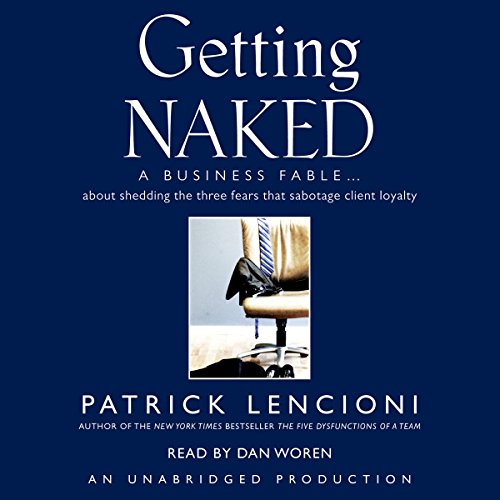Getting Naked
Being vulnerable is hard.
I joined Slalom, my previous employer, in February 2018. During onboarding, I was given a copy of Getting Naked: A Business Fable About Shedding the Three Fears that Sabotage Client Loyalty, as was every other consultant that joined the office at the time. At that point in my life, I was (foolishly) proud that I hadn’t read a book in a number of years. Now, nearly 6 years later, I finally read it.
Without spoiling the book, the three fears that sabotage client loyalty are: fear of being embarrassed, fear of feeling inferior, and fear of losing the business. Having been in a consulting role at several points in my career, these resonated with me like you would not believe.
Day one of my first job after I graduated from university, I showed up to the office to get a crash course on identity and access management and PingFederate (thanks, Cody Cook), and the next day I flew to a client site where I was expected to be “the expert”. All three of those fears ran deep through me that first week, first month, first year, and at many points during my later six years of consulting.
Having been out of the consulting game for four years now, I can tell you that these three fears are not specific to consulting. I see examples of each of these in my current role fairly frequently. So often I see nobody speaking up in a large group setting, only to get a myriad of questions behind the scenes. Speaking up in those settings, particularly as someone early in career or working with a new team, requires vulnerability.
I make an effort to gauge the foundational knowledge of individuals in the room before delving into a topic. However, there are instances when I unintentionally make assumptions, only to be humbled by individuals who pose questions about something I had assumed was familiar to my intended audience. Asking those questions takes vulnerability, but it also sets a positive example that could help others, too.
Through most of my years consulting I had the mindset of “I am being paid to be here because the client doesn’t know how to do what I do.” I closely related my value to the things I could do, or the things that I knew. Saying “I don’t know” was scary; saying it required vulnerability. If I had been more vulnerable in my early consulting years, I likely would have learned more about myself, my clients, and my areas of expertise. There is growth in vulnerability.
Looking back, I can think of several points throughout my career where I have stories (positive and negative) about the lessons discussed in this book. One thing is for sure–I wish I had read the book when I first received it. If I had, I would have likely been able to better understand what problem the customer was really trying to solve, helped others in the room through their confusion, and ultimately worked fewer hundred hour weeks.

